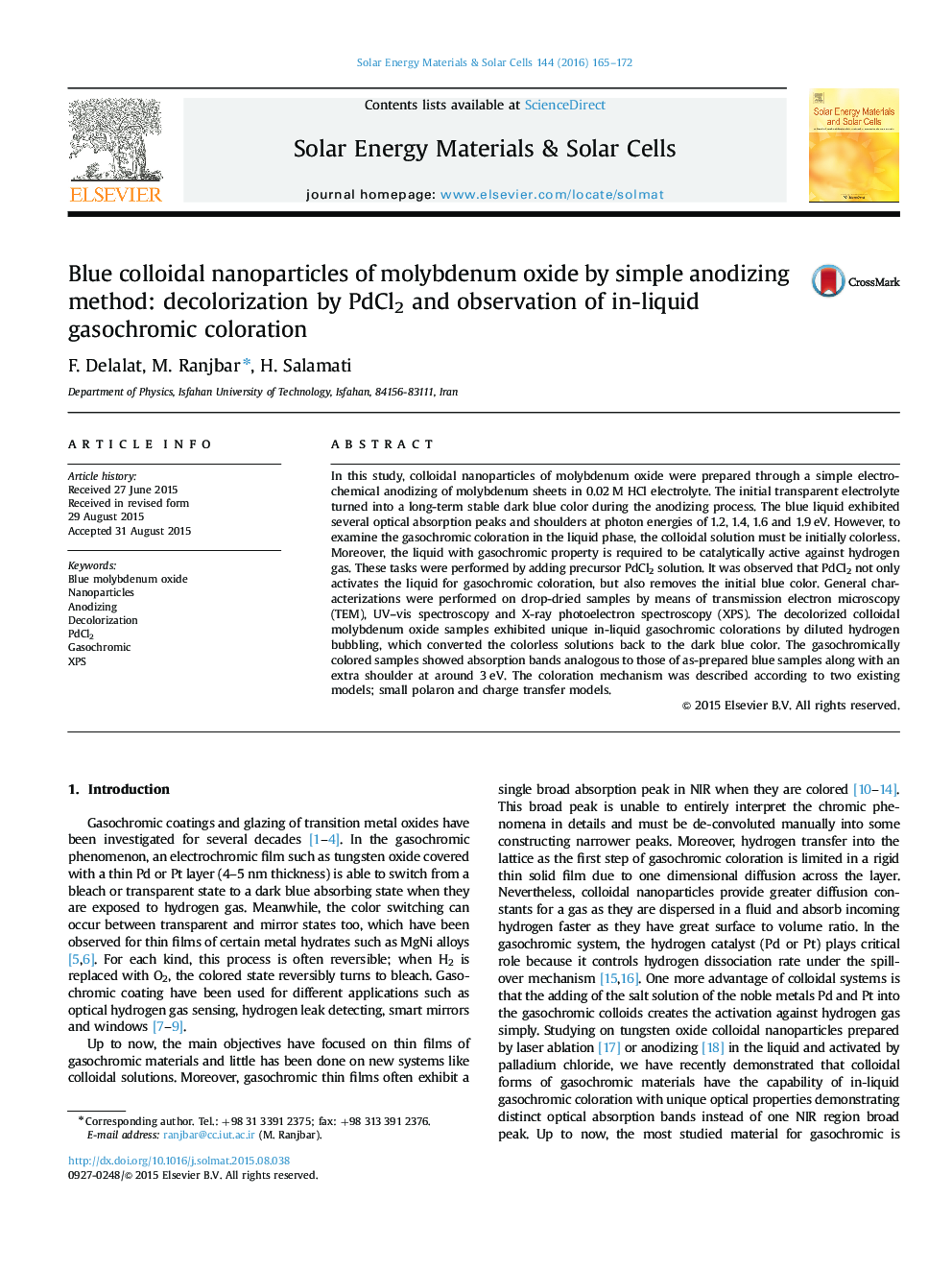| Article ID | Journal | Published Year | Pages | File Type |
|---|---|---|---|---|
| 6534889 | Solar Energy Materials and Solar Cells | 2016 | 8 Pages |
Abstract
In this study, colloidal nanoparticles of molybdenum oxide were prepared through a simple electrochemical anodizing of molybdenum sheets in 0.02Â M HCl electrolyte. The initial transparent electrolyte turned into a long-term stable dark blue color during the anodizing process. The blue liquid exhibited several optical absorption peaks and shoulders at photon energies of 1.2, 1.4, 1.6 and 1.9Â eV. However, to examine the gasochromic coloration in the liquid phase, the colloidal solution must be initially colorless. Moreover, the liquid with gasochromic property is required to be catalytically active against hydrogen gas. These tasks were performed by adding precursor PdCl2 solution. It was observed that PdCl2 not only activates the liquid for gasochromic coloration, but also removes the initial blue color. General characterizations were performed on drop-dried samples by means of transmission electron microscopy (TEM), UV-vis spectroscopy and X-ray photoelectron spectroscopy (XPS). The decolorized colloidal molybdenum oxide samples exhibited unique in-liquid gasochromic colorations by diluted hydrogen bubbling, which converted the colorless solutions back to the dark blue color. The gasochromically colored samples showed absorption bands analogous to those of as-prepared blue samples along with an extra shoulder at around 3Â eV. The coloration mechanism was described according to two existing models; small polaron and charge transfer models.
Related Topics
Physical Sciences and Engineering
Chemical Engineering
Catalysis
Authors
F. Delalat, M. Ranjbar, H. Salamati,
